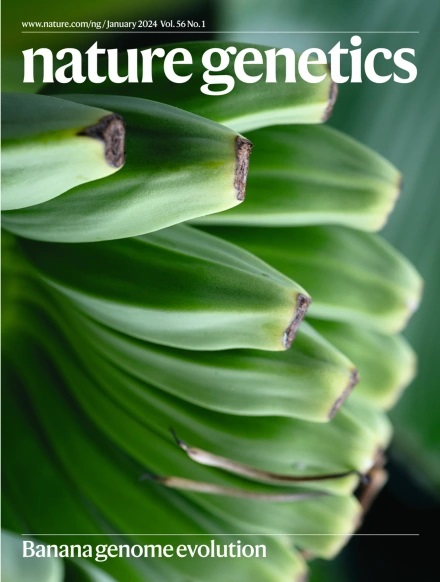Genetic regulation of gene expression across multiple tissues in chickens
IF 31.7
1区 生物学
Q1 GENETICS & HEREDITY
引用次数: 0
Abstract
The chicken is a valuable model for understanding fundamental biology and vertebrate evolution and is a major global source of nutrient-dense and lean protein. Despite being the first non-mammalian amniote to have its genome sequenced, a systematic characterization of functional variation on the chicken genome remains lacking. Here, we integrated bulk RNA sequencing (RNA-seq) data from 7,015 samples, single-cell RNA-seq data from 127,598 cells and 2,869 whole-genome sequences to present a pilot atlas of regulatory variants across 28 chicken tissues. This atlas reveals millions of regulatory effects on primary expression (protein-coding genes, long non-coding RNA and exons) and post-transcriptional modifications (alternative splicing and 3′-untranslated region alternative polyadenylation). We highlighted distinct molecular mechanisms underlying these regulatory variants, their context-dependent behavior and their utility in interpreting genome-wide associations for 39 chicken complex traits. Finally, our comparative analyses of gene regulation between chickens and mammals demonstrate how this resource can facilitate cross-species gene mapping of complex traits. This study introduces a ChickenGTEx atlas of regulatory variants across 28 tissues and illustrates its utility in deciphering association signals for 39 complex traits in chickens.

鸡多组织基因表达的遗传调控
鸡是理解基础生物学和脊椎动物进化的一个有价值的模型,也是全球营养丰富和瘦肉蛋白的主要来源。尽管鸡是第一个对其基因组进行测序的非哺乳动物羊膜动物,但对其基因组功能变异的系统表征仍然缺乏。在这里,我们整合了来自7,015个样本的大量RNA测序(RNA-seq)数据,来自127,598个细胞的单细胞RNA-seq数据和2,869个全基因组序列,以呈现28个鸡组织的调节变异的试点图谱。该图谱揭示了数百万种对初级表达(蛋白质编码基因、长链非编码RNA和外显子)和转录后修饰(选择性剪接和3 ' -非翻译区选择性聚腺苷酸化)的调控作用。我们强调了这些调控变异背后的不同分子机制,它们的环境依赖行为以及它们在解释39个鸡复杂性状的全基因组关联中的应用。最后,我们对鸡和哺乳动物之间基因调控的比较分析表明,这种资源如何促进复杂性状的跨物种基因定位。
本文章由计算机程序翻译,如有差异,请以英文原文为准。
求助全文
约1分钟内获得全文
求助全文
来源期刊

Nature genetics
生物-遗传学
CiteScore
43.00
自引率
2.60%
发文量
241
审稿时长
3 months
期刊介绍:
Nature Genetics publishes the very highest quality research in genetics. It encompasses genetic and functional genomic studies on human and plant traits and on other model organisms. Current emphasis is on the genetic basis for common and complex diseases and on the functional mechanism, architecture and evolution of gene networks, studied by experimental perturbation.
Integrative genetic topics comprise, but are not limited to:
-Genes in the pathology of human disease
-Molecular analysis of simple and complex genetic traits
-Cancer genetics
-Agricultural genomics
-Developmental genetics
-Regulatory variation in gene expression
-Strategies and technologies for extracting function from genomic data
-Pharmacological genomics
-Genome evolution
 求助内容:
求助内容: 应助结果提醒方式:
应助结果提醒方式:


